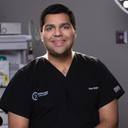I keep reading that SMAS Facelift is bad for smokers--it has something to do about the skin dying. Is this true? Should I not have one, as I do smoke? Please advise.
Answers (30)
From board-certified doctors and trusted medical professionals
More SMAS Facelift Questions
See all SMAS Facelift Q&AWE SEND PRETTY
EMAILS
What’s trending? Who’s turning heads? Which TikTok myths need busting? We’ve got you. No fluff, no gatekeeping—just real talk. Get our free, unfiltered newsletter.









